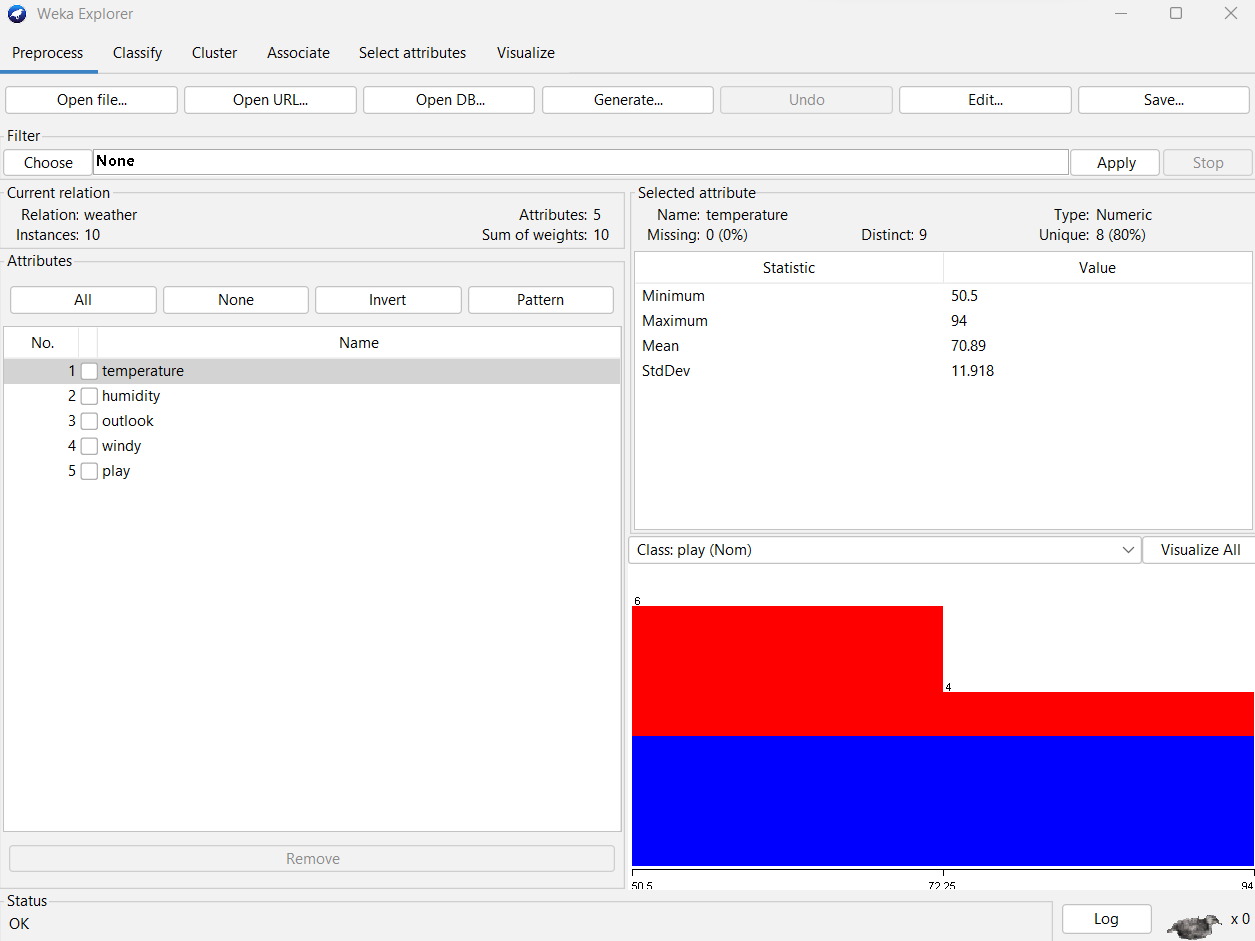DATA MINING - (LAB PROGRAMS)
Notice: Undefined index: title in /home/u681245571/domains/studyglance.in/public_html/labprograms/dmdisplay.php on line 89
Aim:
☛
Solution :
Description:
We need to load a dataset (weather.arff) from the available data sets and observe the attribute names, attribute types, number of records in the dataset, Identify the class attribute (if any), and visualize the data in various dimensions..
To load a dataset (weather.arff) :
Procedure:
Steps:
1) Open the Weka GUI Chooser
2) In that Weka GUI chooser there are five applications, click on Explorer.
3) Explorer shows many options. In that click on 'open file...' button.
4) Choose WEKA folder in C drive.
5) Select and click on the data folder.
6) Select a dataset (weather. arff) from list of available datasets and Click on the Open button.
7) The Weka Explorer exhibits a window as displayed below.

Observe the following things:
(i) Attribute names
The following are the attribute names:
- temperature
- humidity
- outlook
- windy
- play

(ii) Attribute Types
The following is the list of attribute names along with their types.
| Attribute | Type |
| temperature | Numeric |
| humidity | Numeric |
| outlook | Nominal |
| windy | Nominal |
| play | Nominal |
In the above, the attributes temperature and humidity have datatype as Numeric. And the outlook, windy, and play attributes have datatype as Nominal.


(iii) Number of records in the dataset
The number of instances/records in the dataset: 10

(iv) Identify the class attribute (if any)
In the dataset, there is a class attribute that is play. It has two classes those are yes and no.


Result:
The attribute names, attribute types, number of records in the dataset, the class attribute are observed. And visualize the data in the all attributes.
Related Content :
Data Mining Lab Programs
1) Downloading and/or installation of WEKA Data Mining toolkit. View Solution
2) Start working with WEKA tool kit and understand the features of WEKA tool kit. View Solution
3) Loading Data from different sources in WEKA. View Solution
4) Various File Formats supported by WEKA. And Study the ARFF file format. View Solution
5) Demonstration of creating a Student dataset (student.arff) using WEKA tool in Data Mining. View Solution
6) Demonstration of creating a Weather dataset (weather.arff) using WEKA tool in Data Mining View Solution
7) Explore the available data sets in WEKA tool kit. View Solution
8) Load a dataset from the available data sets in the WEKA tool. View Solution
9) From the loaded dataset(weather.arff), observe the attribute names, attribute types, number of records in the dataset, Identify the class attribute (if any), and visualize the data in various dimensions. View Solution
10) Conversion of a Text file into ARFF (Attribute-Relation File Format) using Weka tool. View Solution